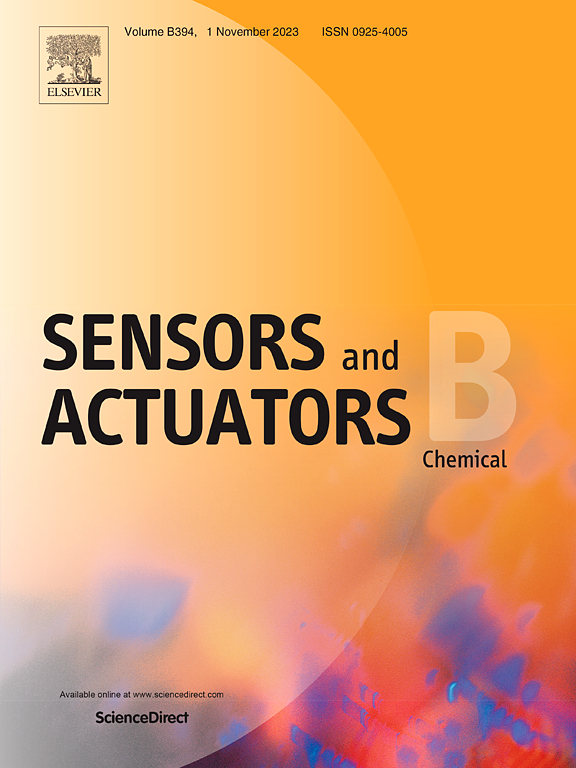Ultra-high response and selectivity of triethylamine sensor based on NiO/Pd/SnO2 multiple heterojunctions composite
IF 8
1区 化学
Q1 CHEMISTRY, ANALYTICAL
引用次数: 0
Abstract
Multiple heterojunctions composite may be an effective way to simultaneously improve the selectivity and response of metal oxide semiconductor-based sensors, as well as reduce the working temperature. In this study, the NiO/Pd/SnO2 composite including PN heterojunction (NiO/SnO2) and Schottky junction (Pd/SnO2) was successfully prepared through three steps. The morphology, structure, and chemical state of surface elements were characterized by XRD, SEM, TEM, and XPS. Gas sensing performance displayed that the NiO/Pd/SnO2 sensor exhibited ultra-high response (1320) and selectivity (>4.1), low detect limit (0.1 ppm) and excellent long-term stability to 100 ppm of TEA at 275°C. Compared with SnO2 and NiO/SnO2, Pd/SnO2 and NiO/Pd/SnO2 sensors exhibited higher response and lower working temperature. Compared with Pd/SnO2, the NiO/Pd/SnO2 sensor exhibited higher selectivity. In addition, the adsorptions of oxygen and TEA on the surface of samples have also been simulated through DFT calculations. Based on the characterization and calculation results, the excellent sensing performance of the NiO/Pd/SnO2 sensor can be attributed to the multiple heterojunctions and strong activation effect of Pd on oxygen and TEA molecules.
求助全文
约1分钟内获得全文
求助全文
来源期刊

Sensors and Actuators B: Chemical
工程技术-电化学
CiteScore
14.60
自引率
11.90%
发文量
1776
审稿时长
3.2 months
期刊介绍:
Sensors & Actuators, B: Chemical is an international journal focused on the research and development of chemical transducers. It covers chemical sensors and biosensors, chemical actuators, and analytical microsystems. The journal is interdisciplinary, aiming to publish original works showcasing substantial advancements beyond the current state of the art in these fields, with practical applicability to solving meaningful analytical problems. Review articles are accepted by invitation from an Editor of the journal.
 求助内容:
求助内容: 应助结果提醒方式:
应助结果提醒方式:


